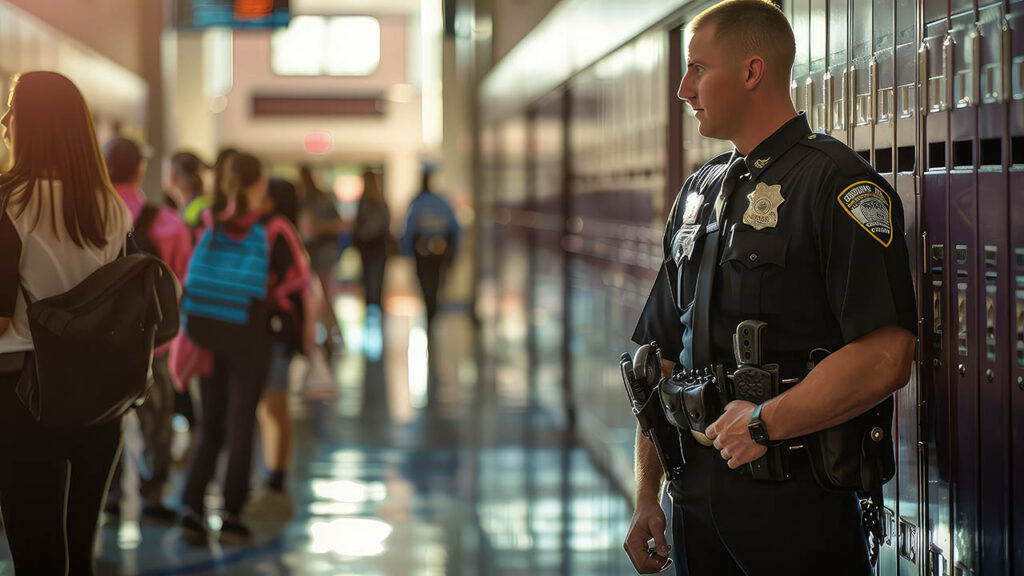Are SROs Really the Solution? Why Misaligned Roles in School Safety Agreements Are Failing Students
The Role of School Resource Officers: Why Clear Agreements and Defined Roles Matter
Monic Behnken’s exploration of the effectiveness of SROs (Des Moines Register, December 7, 2024) in preventing violence highlighted important issues around school safety. Her argument raises valid concerns about the limitations of SROs and the unintended consequences their presence can have on students. However, while the data underscores challenges, the solution lies not in removing SROs entirely but in addressing the root cause of many issues: unclear or poorly implemented Memorandums of Understanding (MOUs) between schools and law enforcement agencies.
The Problem with Undefined Roles in MOUs
Behnken identifies a fundamental problem: the roles of SROs are often vaguely defined, leading to situations where officers act outside their intended capacity. This misalignment occurs when one partner in the MOU—whether the school or law enforcement—steps into the other’s role, often with disastrous results. For example, when SROs become enforcers of school discipline instead of focusing on safety and crime prevention, it contributes to the “school-to-prison pipeline” Behnken describes. Conversely, when schools rely on administrators or teachers to handle criminal behavior, they risk mishandling situations that require law enforcement expertise.
Relationships and Role Clarity: The Key to Success
Strong relationships between school administrators and SROs are crucial to resolving these challenges. A well-executed MOU clearly defines roles and responsibilities, ensuring that:
- SROs focus on crime prevention, safety, and building trust with students.
- Administrators and educators handle discipline and student development within the educational framework.
- Both parties collaborate with mental health professionals, counselors, and social workers to address underlying student issues.
When these roles blur, problems arise. For instance, if an SRO is tasked with enforcing minor discipline issues, it can lead to over-criminalization of student behavior. Similarly, if school staff handle potential criminal activity without law enforcement input, it can jeopardize student safety.
Training and Implementation Gaps
Behnken’s recommendations for SRO training in child development and de-escalation are well-founded. However, without proper implementation and enforcement of the MOU, even the best training can fall short. Many districts lack the infrastructure to regularly review and update MOUs or provide ongoing professional development for all stakeholders.
How Prowess Edge Can Help
At Prowess Edge Consulting Group, we can help by bridging these gaps. The approach focuses on:
- Developing Clear MOUs: We will work at the intersection of schools and law enforcement to create and help manage comprehensive agreements that delineates roles, prevents overlap, and ensures compliance with best practices.
- Training Programs: We will provide tailored training for administrators, educators, and SROs, focusing on collaborative strategies between the school and law enforcement.
- Incident-Based Learning: Using real-world examples, we help stakeholders understand how role confusion leads to failures and provide actionable strategies to prevent such issues.
- Follow-Up Support: Our team offers ongoing consultation to monitor MOU effectiveness and adjust strategies as needed.
By addressing the underlying issues of misalignment and lack of clarity, we empower schools and SROs to work together effectively, fostering safer and more supportive environments for students.
For schools looking to enhance safety while avoiding the pitfalls Behnken outlines, a strong MOU and dedicated training are not just solutions—they are necessities. Let’s work together to ensure your school’s partnerships are defined, effective, and built to last.
Learn more about how Prowess Edge can help your school improve safety and accountability. Contact us today.
